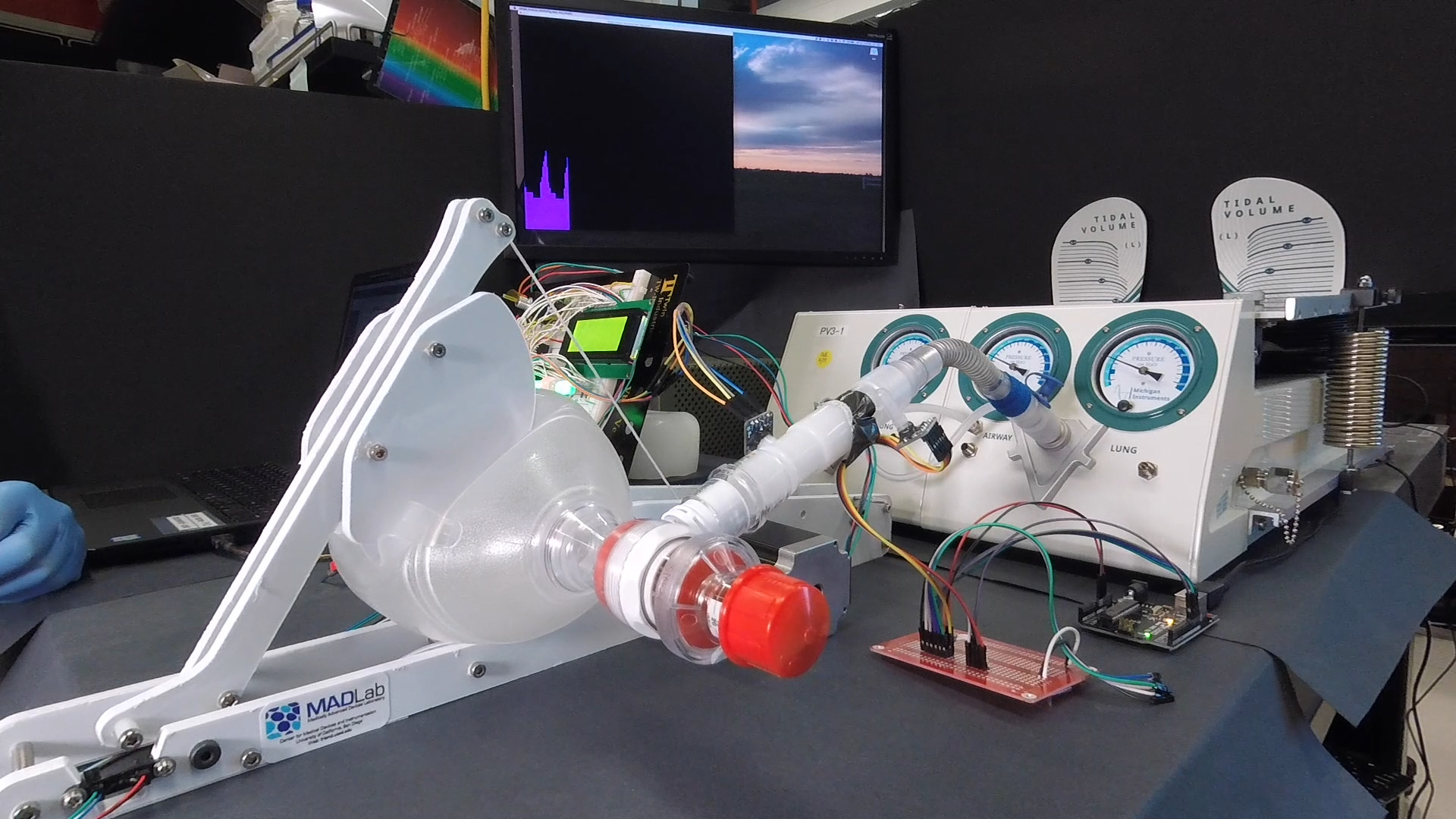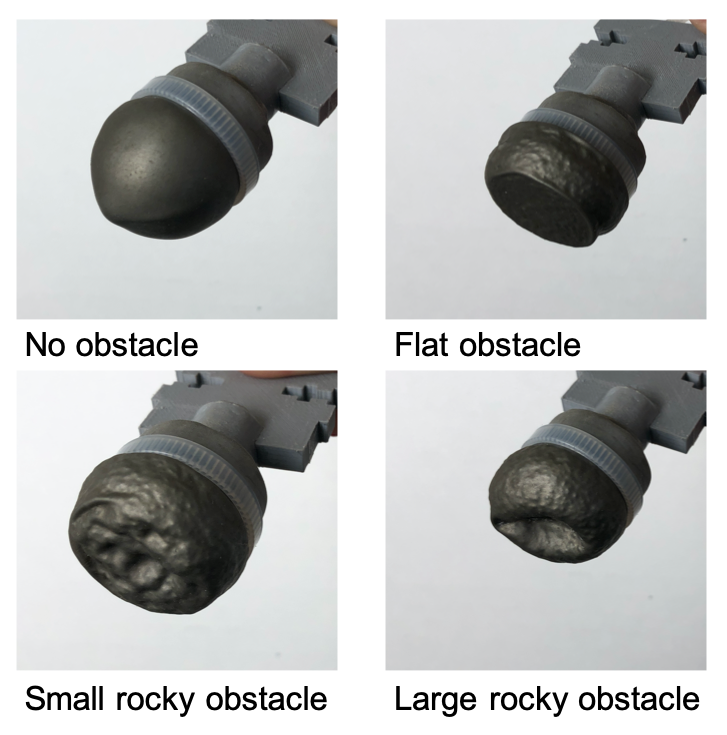Review shows B61-12 Life Extension Program work can move forward confidently
Tag: Mechanical Engineering
Researchers print, tune graphene sensors to monitor food freshness, safety
AMES, Iowa – Researchers dipped their new, printed sensors into tuna broth and watched the readings. It turned out the sensors – printed with high-resolution aerosol jet printers on a flexible polymer film and tuned to test for histamine, an…
Sandia weapons program meets safety, design requirements
Review shows B61-12 Life Extension Program work can move forward confidently
New automotive radar spots hazards around corners
Using radar commonly deployed to track speeders and fastballs, researchers have developed an automated system that will allow cars to peer around corners and spot oncoming traffic and pedestrians. The system, easily integrated into today’s vehicles, uses Doppler radar to…
New automotive radar spots hazards around corners
Using radar commonly deployed to track speeders and fastballs, researchers have developed an automated system that will allow cars to peer around corners and spot oncoming traffic and pedestrians. The system, easily integrated into today’s vehicles, uses Doppler radar to…
Self-powered alarm fights forest fires, monitors environment
Smokey the Bear says that only you can prevent wildfires, but what if Smokey had a high-tech backup? In a new study, a team of Michigan State University scientists designed and fabricated a remote forest fire detection and alarm system…
Self-powered alarm fights forest fires, monitors environment
Smokey the Bear says that only you can prevent wildfires, but what if Smokey had a high-tech backup? In a new study, a team of Michigan State University scientists designed and fabricated a remote forest fire detection and alarm system…

Researchers develop low-cost, easy-to-use emergency ventilator for COVID-19 patients
A team of engineers and physicians at the University of California San Diego has developed a low-cost, easy-to-use emergency ventilator for COVID-19 patients that is built around a ventilator bag usually found in ambulances.
The team built an automated system around the bag and brought down the cost of an emergency ventilator to just $500 per unit–by comparison, state of the art ventilators currently cost at least $10,000. The device’s components can be rapidly fabricated and the ventilator can be assembled in just 15 minutes.
Research determines financial benefit from driving electric vehicles
Over a 15-year life, EVs can save thousands of dollars in fuel costs compared to gasoline vehicles
Research determines financial benefit from driving electric vehicles
Over a 15-year life, EVs can save thousands of dollars in fuel costs compared to gasoline vehicles
Simulating wind farm development
Wind farms are large, highly technical projects but their development often relies on personal decisions made by individual landowners and small communities. Recognizing the power of the human element in wind farm planning, Stanford University researchers have devised a model…
New research leads to Army drones changing shape mid-flight
ABERDEEN PROVING GROUND, Md. — Soon, the U.S. Army will be able to deploy autonomous air vehicles that can change shape during flight, according to new research presented at the AIAA Aviation Forum and Exposition’s virtual event June 16. Researchers…
This supernova in a lab mimics the cosmic blast’s splendid aftermath
Nestled in the constellation Taurus, a spectacle of swirling cosmic gases measuring half a dozen lightyears across glows in shades of emerald and auburn. The Crab Nebula was born of a supernova, the explosion of a giant star, and now,…
This supernova in a lab mimics the cosmic blast’s splendid aftermath
Nestled in the constellation Taurus, a spectacle of swirling cosmic gases measuring half a dozen lightyears across glows in shades of emerald and auburn. The Crab Nebula was born of a supernova, the explosion of a giant star, and now,…
Hunting in savanna-like landscapes may have poured jet fuel on brain evolution
Rife with obstacles and occlusions, terrestrial environments potentially helped give rise to planning circuits in the brain
Innovative gear principle
“Smart Gear” makes industrial robots more powerful and intelligent
Hunting in savanna-like landscapes may have poured jet fuel on brain evolution
Rife with obstacles and occlusions, terrestrial environments potentially helped give rise to planning circuits in the brain
Innovative gear principle
“Smart Gear” makes industrial robots more powerful and intelligent
Life sciences open their doors for engineers
EMBL launches first training programme for research infrastructure scientists
Life sciences open their doors for engineers
EMBL launches first training programme for research infrastructure scientists
Lehigh University engineers awarded $280K in Manufacturing PA Innovation Program grants
State program supports academic-industry partnerships in sectors such as biomedicine, energy
Unlocking PNA’s superpowers for self-assembling nanostructures
Researchers at Carnegie Mellon University have developed a method for self-assembling nanostructures with gamma-modified peptide nucleic acid (γPNA), a synthetic mimic of DNA. The process has the potential to impact nanomanufacturing as well as future biomedical technologies like targeted diagnostics…
Oak Ridge National Laboratory welcomes 6 new research fellows to Innovation Crossroads
Oak Ridge National Laboratory welcomed six technology innovators to join the fourth cohort of Innovation Crossroads, the Southeast’s only entrepreneurial research and development program based at a U.S. Department of Energy national laboratory. For the second year, the Tennessee Valley…
Freshly printed magnets
Metal 3D laser printing
Freshly printed magnets
Metal 3D laser printing
Russian engineers invented the first unmanned solar wing-in-ground-effect vehicle
The wing-in-ground-effect vehicle supported by the AI system
Russian engineers invented the first unmanned solar wing-in-ground-effect vehicle
The wing-in-ground-effect vehicle supported by the AI system
Developing better fabrication techniques for pH-responsive microcapsules
Researchers have developed a new method to create microcapsules, which are tiny droplets surrounded by a solid shell. The technique can be used to make microcapsules that respond to changes in pH, which are useful for applications such as anti-corrosion…
New solutions for fabric biogas storage systems
At a test plant, KIT researchers studied how fabric biogas storage systems can be improved
Centre for Compressor Technology spin-out launches SCORG alto
The improved product is hosted by Microsoft Azure and can be accessed through any smart device.
Lab makes 4D printing more practical
Rice advances manufacture of complex shapeshifters for soft robots, biomedical implants
DOE NETL commissions SwRI to develop methane quantification technology
Project builds upon previous DOE-funded research using machine learning to detect methane leaks
Developing better fabrication techniques for pH-responsive microcapsules
Researchers have developed a new method to create microcapsules, which are tiny droplets surrounded by a solid shell. The technique can be used to make microcapsules that respond to changes in pH, which are useful for applications such as anti-corrosion…
New solutions for fabric biogas storage systems
At a test plant, KIT researchers studied how fabric biogas storage systems can be improved
Centre for Compressor Technology spin-out launches SCORG alto
The improved product is hosted by Microsoft Azure and can be accessed through any smart device.
Lab makes 4D printing more practical
Rice advances manufacture of complex shapeshifters for soft robots, biomedical implants
DOE NETL commissions SwRI to develop methane quantification technology
Project builds upon previous DOE-funded research using machine learning to detect methane leaks
Engineers put tens of thousands of artificial brain synapses on a single chip
The design could advance the development of small, portable AI devices
Engineers put tens of thousands of artificial brain synapses on a single chip
The design could advance the development of small, portable AI devices
Keeping water and energy secure
Engineering researcher studies smart city cybersecurity
Keeping water and energy secure
Engineering researcher studies smart city cybersecurity
New research leads to lighter and greener bridges
A recently completed research project revealed the potential for reducing material used for a suspension bridge deck by more than 25 per cent – meaning a saving of up to 30 per cent of CO2 emissions.
ETH researchers deconstruct tissue repair
Anyone who is injured hopes for a speedy recovery. But wounds that heal too quickly can heal badly: if the concentration of certain growth factors becomes too high and the healing process overshoots the mark, then bulging (in technical jargon:…
New research leads to lighter and greener bridges
A recently completed research project revealed the potential for reducing material used for a suspension bridge deck by more than 25 per cent – meaning a saving of up to 30 per cent of CO2 emissions.
ETH researchers deconstruct tissue repair
Anyone who is injured hopes for a speedy recovery. But wounds that heal too quickly can heal badly: if the concentration of certain growth factors becomes too high and the healing process overshoots the mark, then bulging (in technical jargon:…
Stretchable variable color sheet that changes color with expansion and contraction
For the application of electronic skin that displays images pasted on the skin

These flexible feet help robots walk faster
Roboticists at the University of California San Diego have developed flexible feet that can help robots walk up to 40 percent faster on uneven terrain such as pebbles and wood chips. The work has applications for search-and-rescue missions as well as space exploration.
Russian scientists to improve the battery for sensors
Researchers approached the creation of a solid-state thin-film battery for miniature devices and sensors
Researchers develop viable sodium battery
PULLMAN, Wash. – Washington State University (WSU) and Pacific Northwest National Laboratory (PNNL) researchers have created a sodium-ion battery that holds as much energy and works as well as some commercial lithium-ion battery chemistries, making for a potentially viable battery…
Smart textiles made possible by flexible transmission lines
Professor Fabien Sorin and doctoral assistant Andreas Leber, at the Laboratory of Photonic Materials and Fibre Devices (FIMAP) in EPFL’s School of Engineering, have developed a technology that can be used to detect a body’s movements – and a whole…